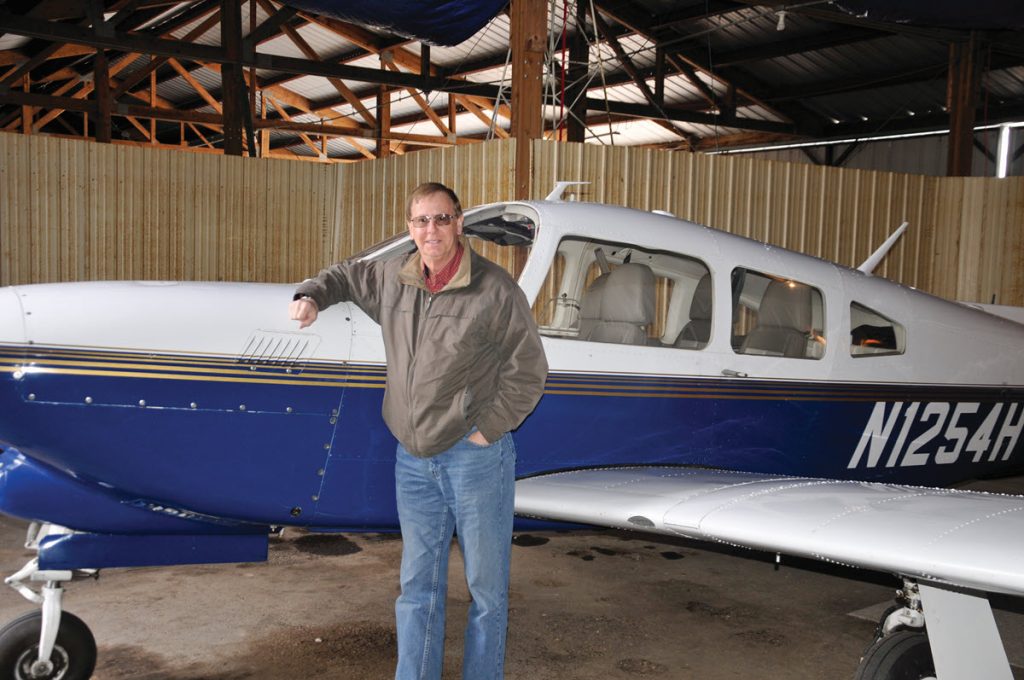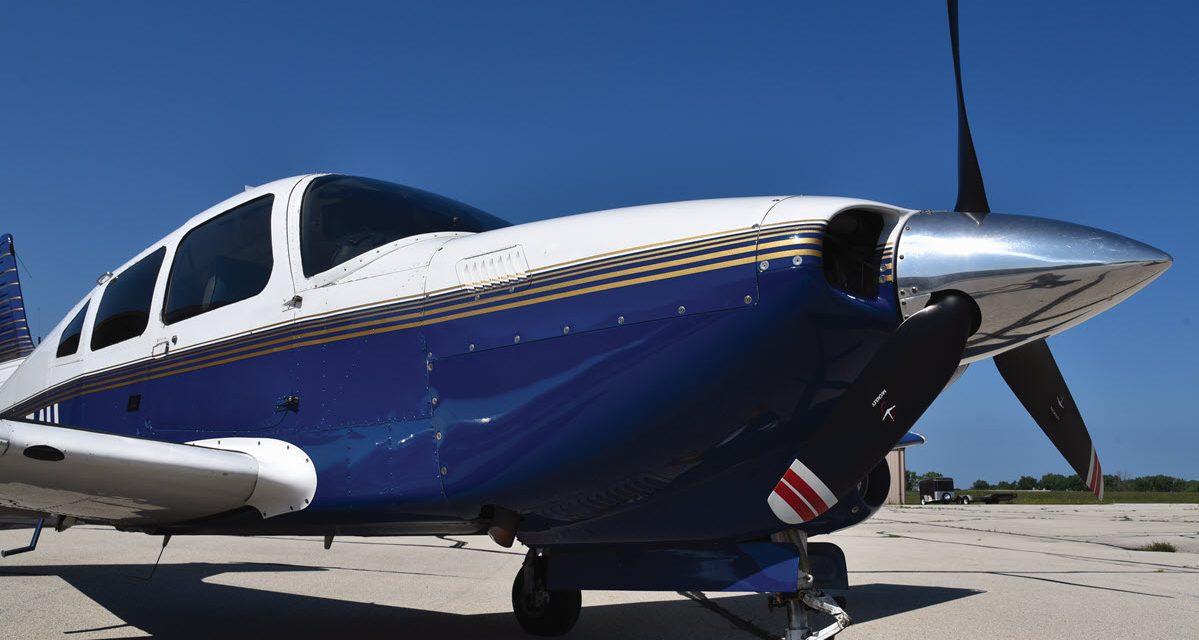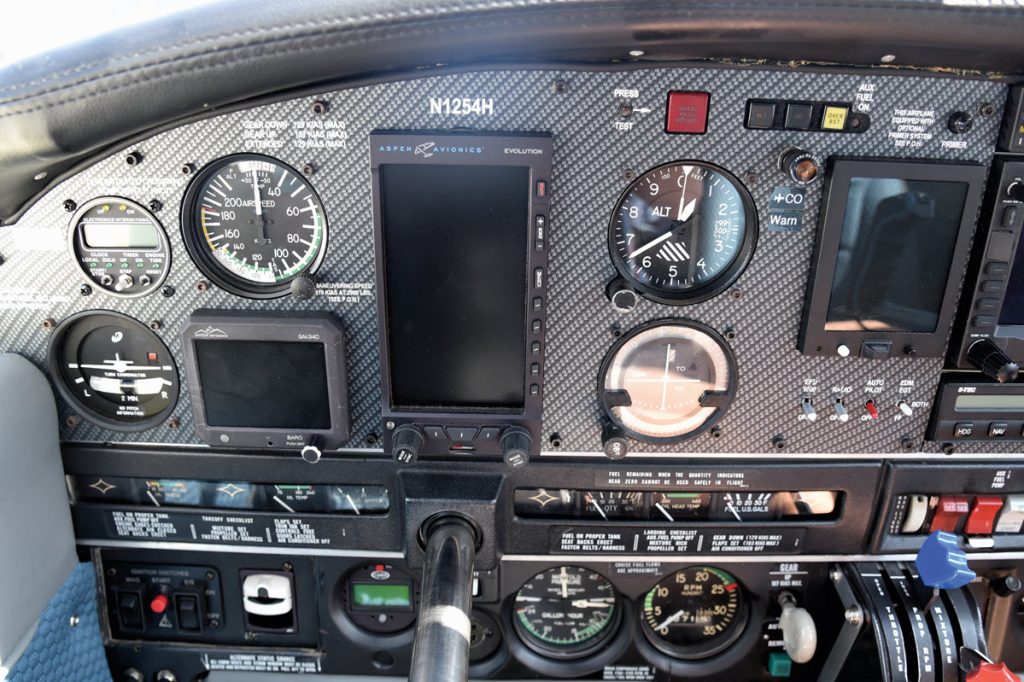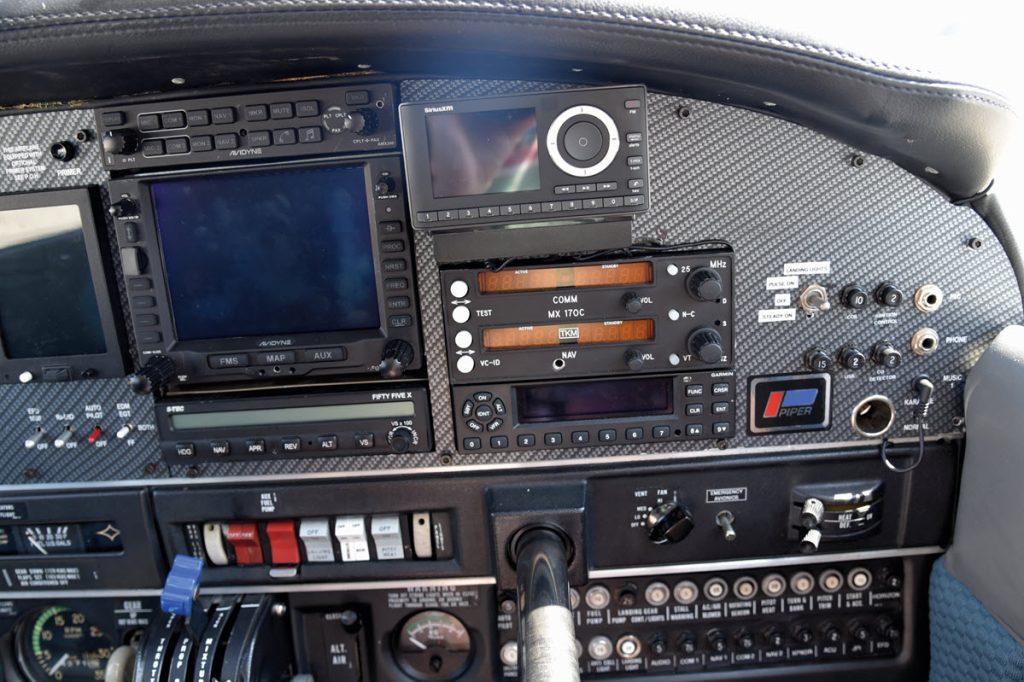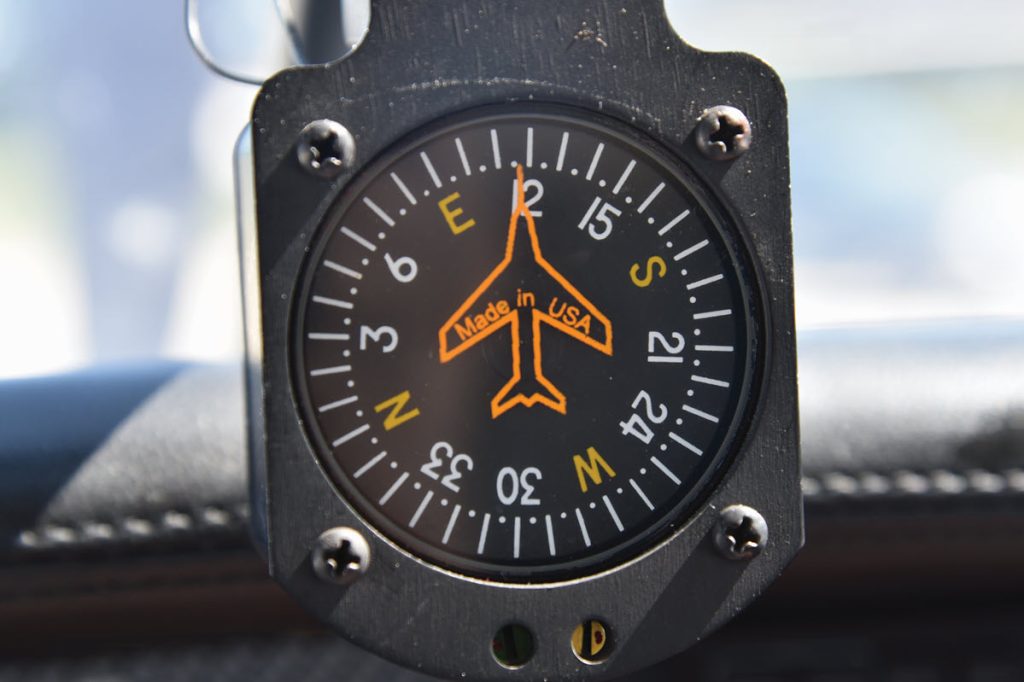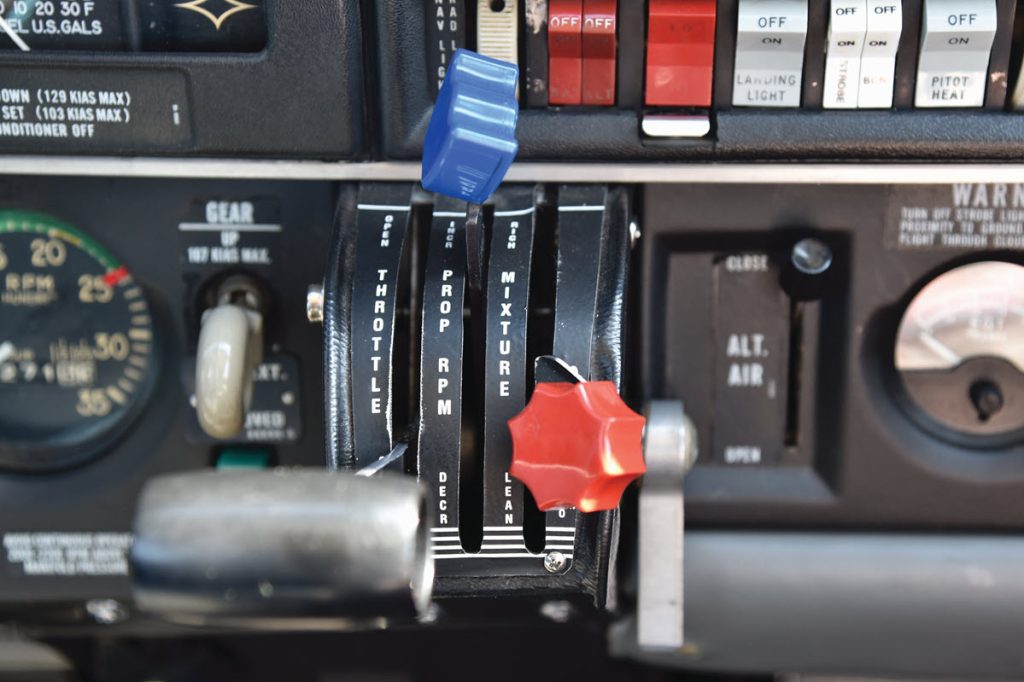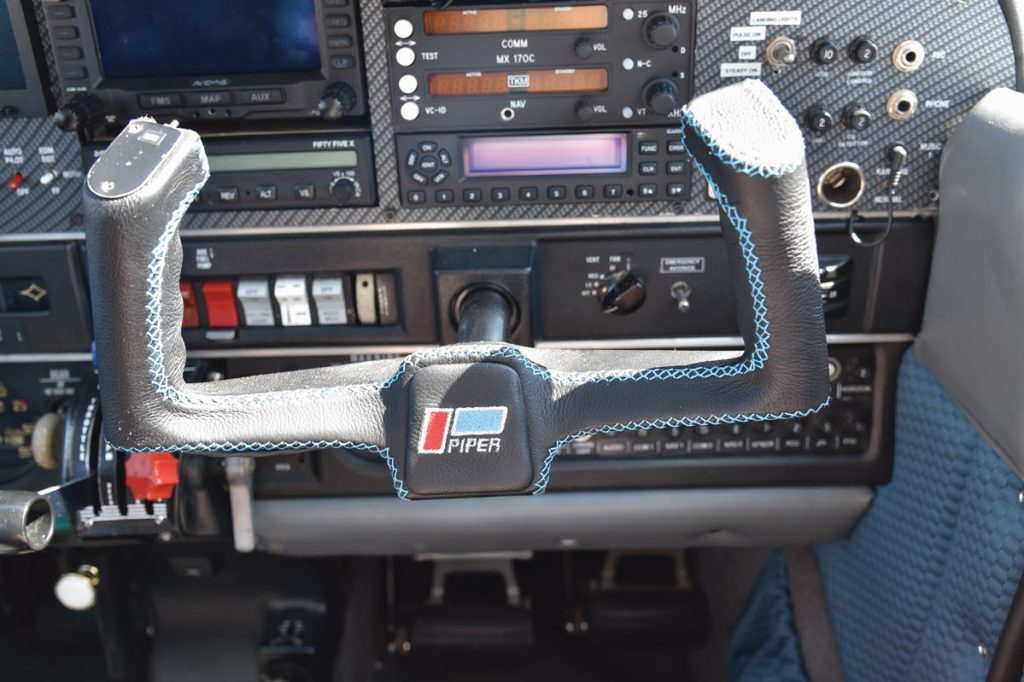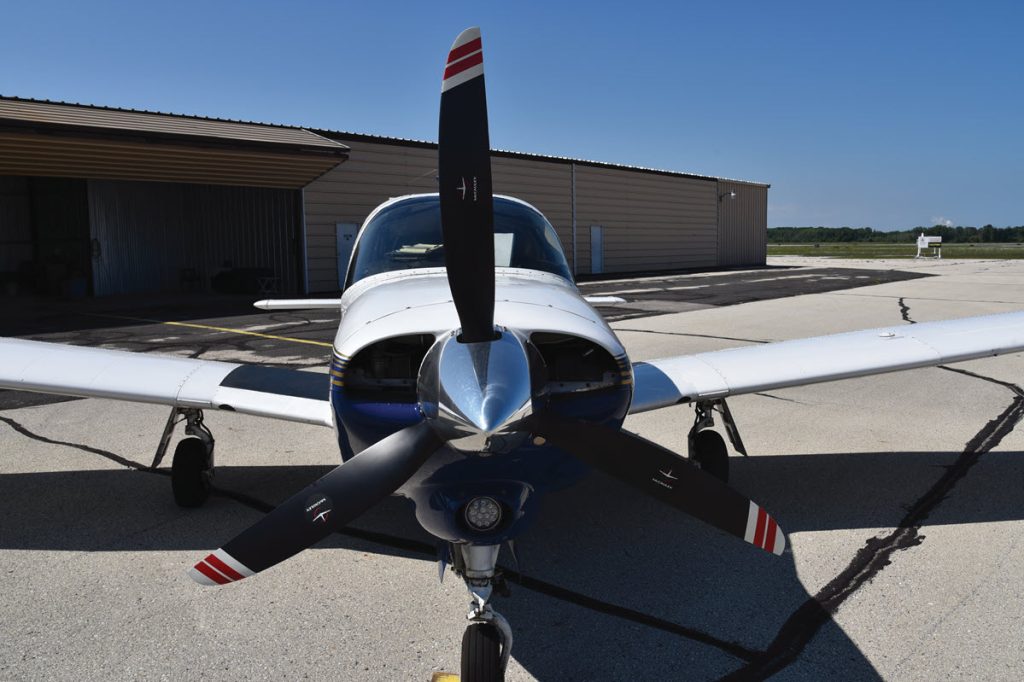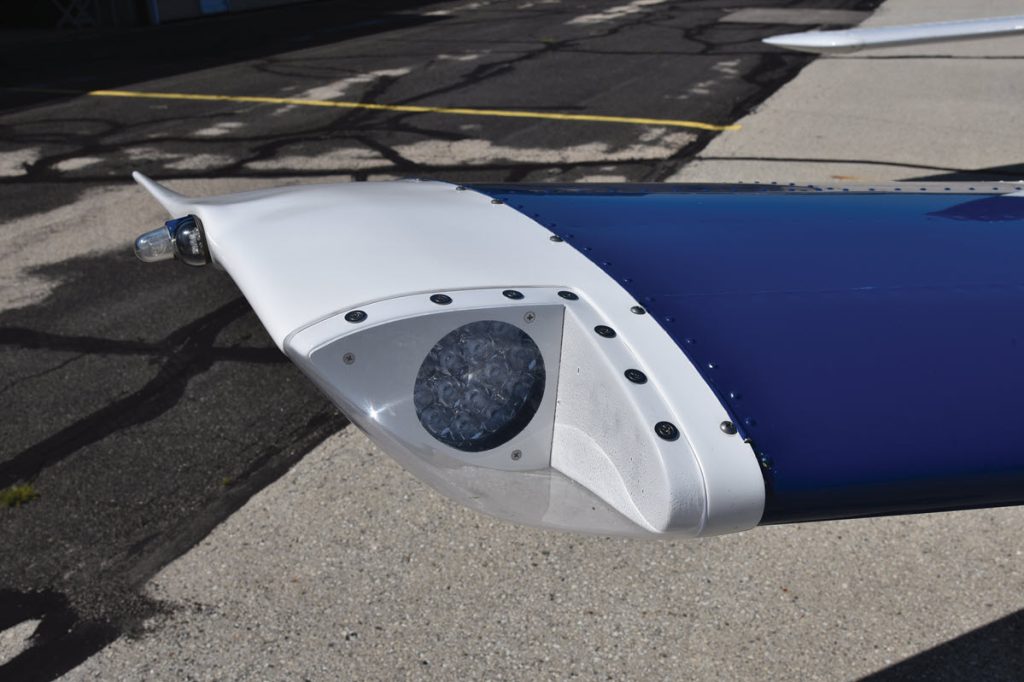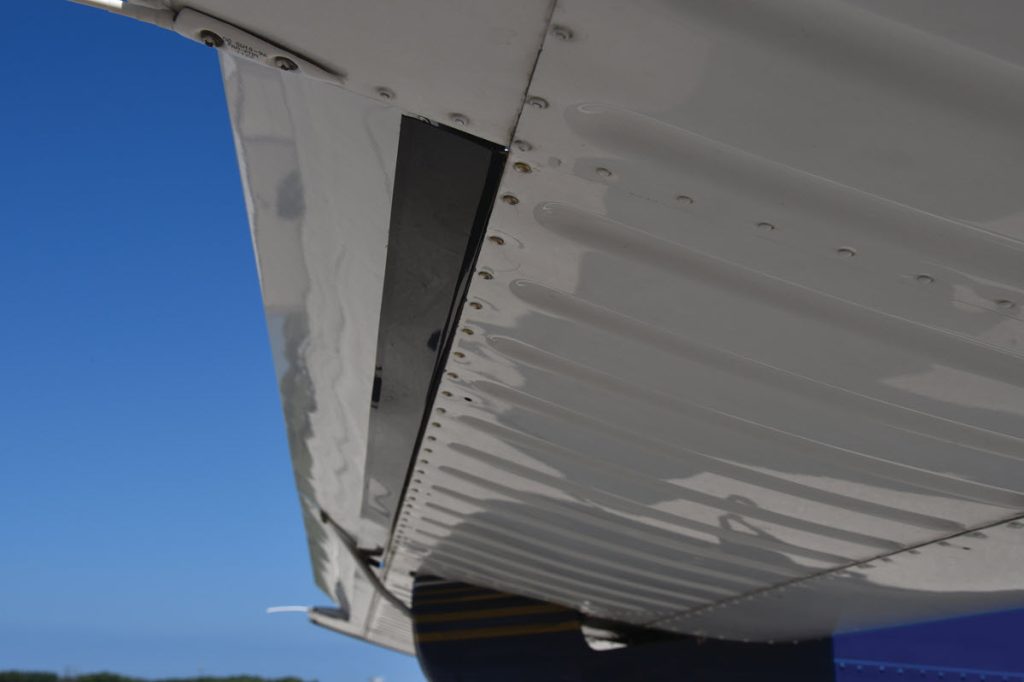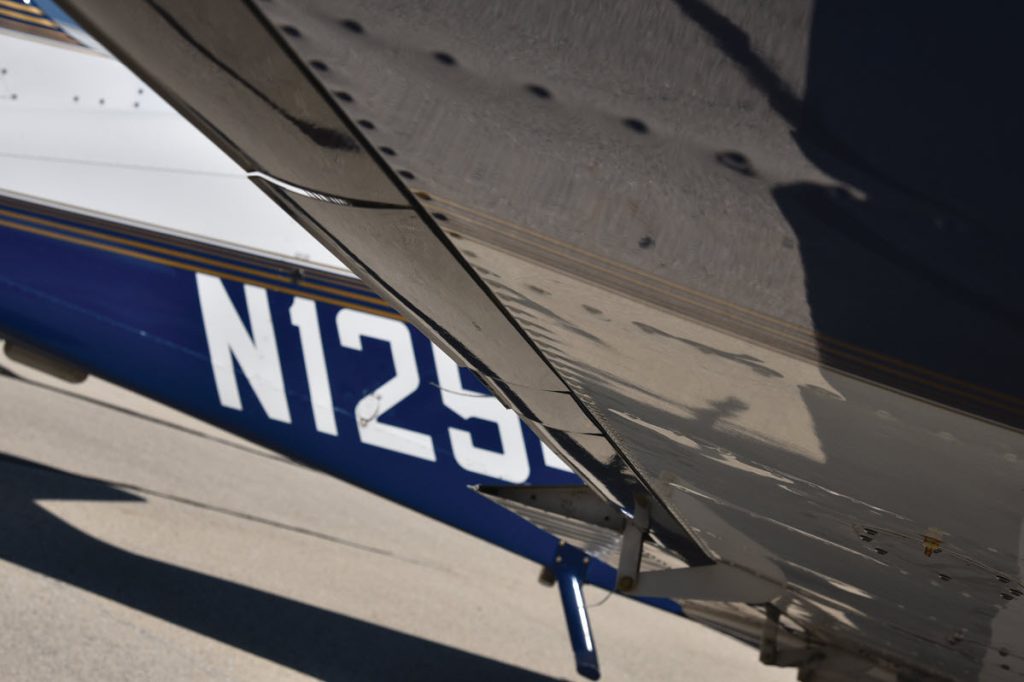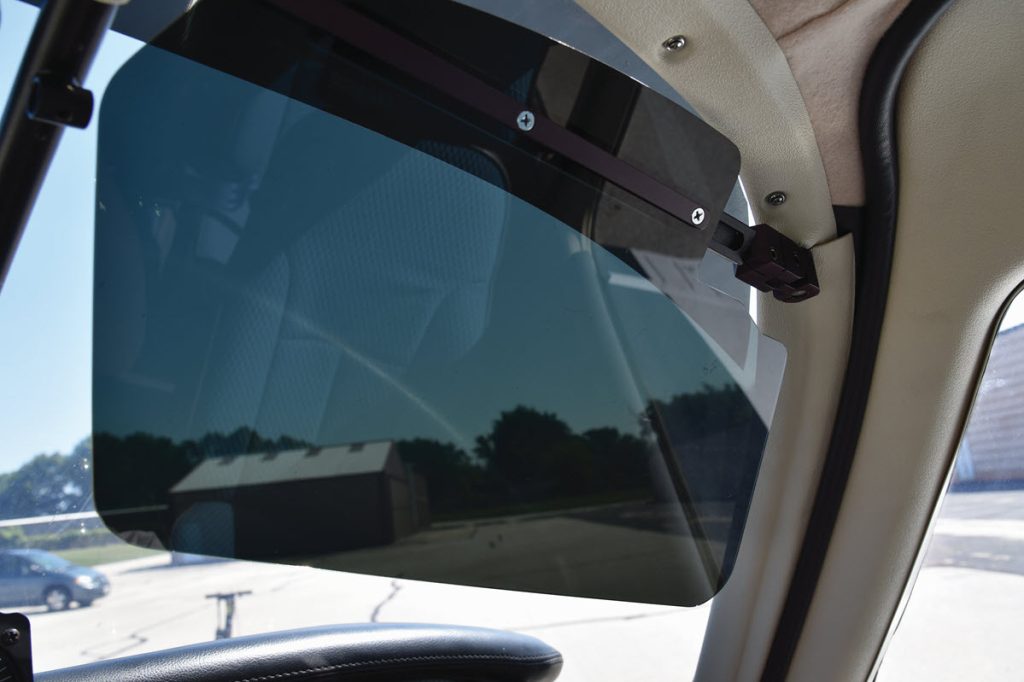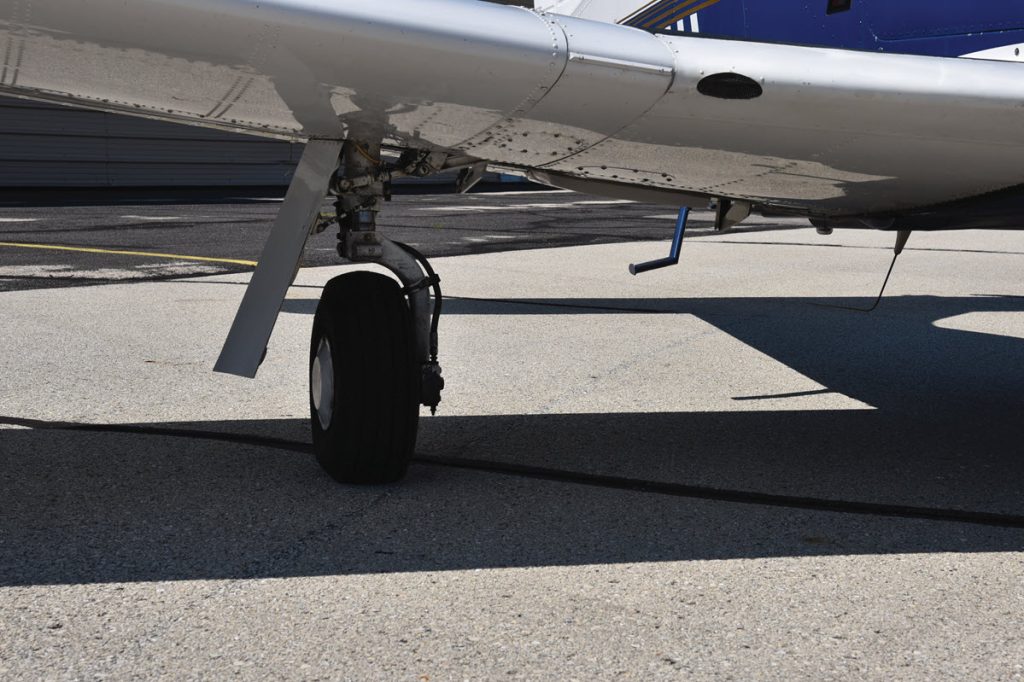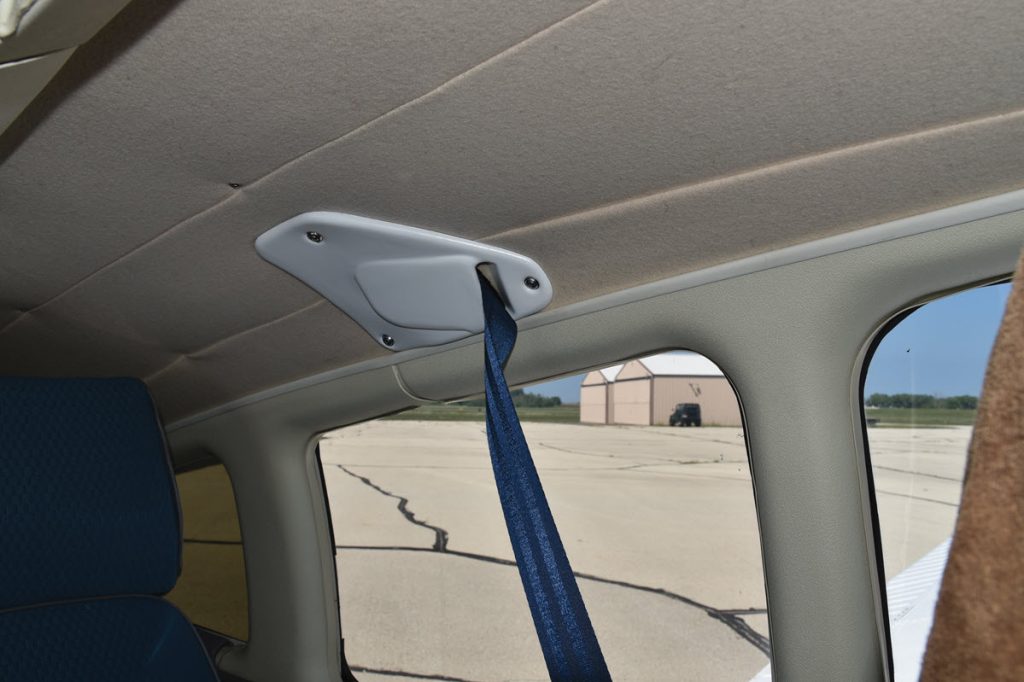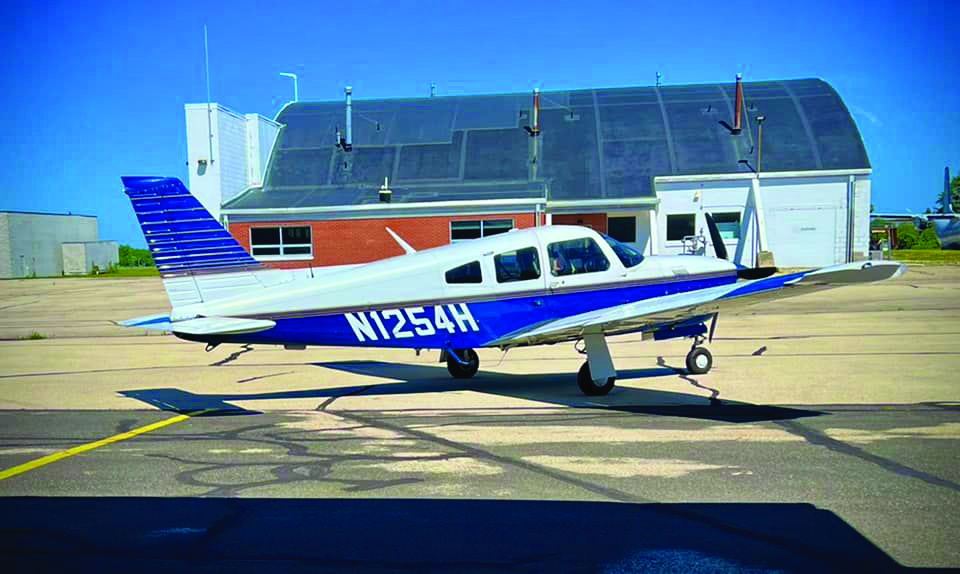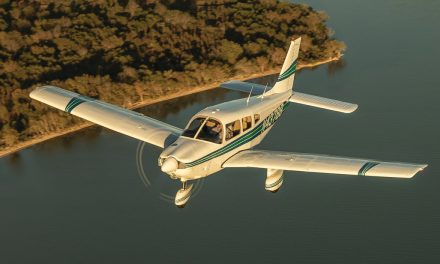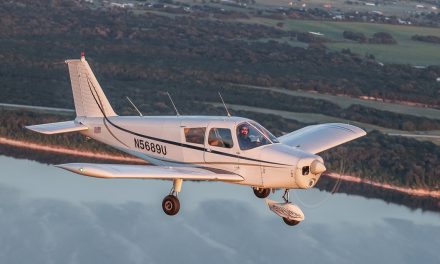My 1977 PA-28R-201T Turbo Arrow III rates a medium on the testosterone scale and is eminently practical, at least as far as four-place, single-engine aircraft are concerned. I love this airplane! I’ve owned it since 2018 and it’s my eighth flying machine since 1964. During that time, I’ve owned a Grumman AA-1 (TR-2), Grumman AA-5 Traveler, 1977 Warrior, 1977 Seminole, 1975 Seneca II, 1981 Seneca III, 1977 Seneca II, and now my 1977 Turbo Arrow III.
In between these airplanes, I’ve rented a Mooney 231, Seminole, and Archer and, for 10 years, Lear 35s and 55s. I even have a few hours in a Cessna Citation M2 a few years back that Cessna lent me along with a Cessna TTx.
As a high school kid, I rented Cherokee 140s and 180s from Lease-A-Plane at Sky Harbor and Chicagoland airports in the Chicago suburbs. I learned to fly at Chicago’s Midway Airport in an Alon Aircoupe at Illinois Aircraft Corporation. That was a long time ago!
More recently, I was fortunate to use my four twins — the Seminole and three Senecas — in my business, but when I retired, it became obvious that I didn’t need a big plane anymore, regardless of how nice it was to fly. So my last Seneca, which wasn’t getting used enough, needed to go down the airway to a new owner.
Little did I know that one of our Piper Owner members would approach me and want to buy it. He had a Turbo Arrow for sale at that time. I had no obligation to acquire his Arrow, but I was intrigued by it. Since I hadn’t been actively planning to replace my Seneca, I hadn’t given any serious thought about his Arrow, or any other plane for that matter.
While I truly loved going 180+ kts with a de-iced, furnace-warmed twin that could hold four to six adults, all the baggage I could stuff into the nose and tail, and 160 gallons for 7+ hours of cruise (my Seneca had aftermarket fuel tanks installed), it also only got 7 nm/gal and cost about $1,000 per topoff. While the Seneca was wonderful, it wasn’t very practical at this point in my life.
I considered a Lance/Saratoga but didn’t think I’d take advantage of the six-seat capability very often. It has the same fuselage as the Seneca, which I had grown to love, but it was largely unnecessary for my new mission. The more I thought about a variant of the PA-28, the more I thought it was a good idea. And there was no way that I was going to fly a straight-legged airplane like perhaps the 235/Dakota. Also, the more I thought about it, I still wanted to have the turbo, even though I live in flatland Wisconsin.
The Arrow owner and I eventually traded airplanes. In addition to getting the Turbo Arrow, I received a rather substantial check, too, and because it was a trade, there was no state sales tax either. So the Seneca moved to Florida and the new owner put a Dynon panel and autopilot in. As I understand it, the STC that Dynon earned from the FAA for putting its autopilot in a de-iced Seneca was done in my PA-34. I saw my old plane while the new owner was visiting in the Chicago area last week, and the new owner did a magnificent job on it!
I, too, have done a significant number of upgrades to my plane, and I wouldn’t consider it anywhere close to being a stock Arrow. More on that later.
What I Liked About This Particular Arrow
So what did I like about the Arrow? First, being practical, the airframe had about 3,800 hours TTSN, which is perfect. It had a proven airframe with no accident history, which I verified by scouring the logbooks and FAA records. This took place before the wing spar AD was announced, but I was smart enough to know that I didn’t want a beat-up trainer. (For those who don’t know how to recognize a trainer, look for 100-hour inspections in the logbooks rather than annual inspections.)
Also, the previous owner had removed the old stock Piper panel and installed a one-piece carbon fiber panel with almost all new avionics. He spent over $50,000 on them no more than six months before trading the plane to me. He put in a Garmin 650 GPS, S-TEC 55x autopilot, Aspen PFD, Sandia Labs backup attitude indicator, and Garmin 345 transponder. It also had an original clock, airspeed, altimeter, and KX-170 nav/comm. I slid out the KX-170 and slid in a shiny new TKM MX-170 nav/comm. TKM, by the way, has closed after 40-plus years in business and more than 30,000 radios installed. A new company has taken over the repair and support of their radios, so none of us are orphaned.
The Engine and Upgrades
My Arrow’s engine is a Continental TSIO-360-FB with an 1,800-hour TBO. My Seneca IIs had (L) TSIO-360-EBs. I’ve had nine of these engines over about 35 years without any major surprises. My Arrow engine is configured better than my Seneca engines, as technology has improved. For example, in the Seneca, you can’t remove the vacuum system if the plane is equipped with de-icing. You can certainly remove the vacuum instruments, but the de-icing boots are air-driven. The vacuum system in the de-ice equipped Seneca operates on a pressure system. In the Arrow with no de-icing system, I could safely remove the vacuum instruments as well as the entire vacuum system, saving more than 20 pounds, plus the pump, vacuum instrument, hoses, and instruments. Additionally, I’ve installed an Electroair single electronic ignition system and removed one magneto. While Electroair now has a dual electronic ignition system available, I haven’t seen any advantages to installing it, given the cost.
Have you ever flown out for lunch with a friend on a hot summer day? When you leave the restaurant and your plane has been baking in the sun for an hour or two, does it start? I had been plagued by hot starts for so many decades that I was too embarrassed to take a friend out for lunch in the summer. How could a $200,000 airplane not start? But since I had one electronic ignition system (EIS) installed, I’ve never had a hot start problem again, as the engine always starts after two blade turns, hot or cold, summer or winter. I’ve had the EIS now for many years without a problem. In fact, it proved itself when I lost a magneto over Nebraska. It only had 400 hours on it. As you may recall, magnetos need to be overhauled at 500 hours. During this incident, the Electroair system worked perfectly. I give it an A+. My remaining magneto is pressurized, as I regularly take the Arrow up to 17,000 feet and occasionally to Flight Level 180.
Finally, I have a Merlyn Black Magic upper deck controller, which many of you would know by the term automatic wastegate. The Merlyn allows me to maintain 80% power up to 19,000 feet.
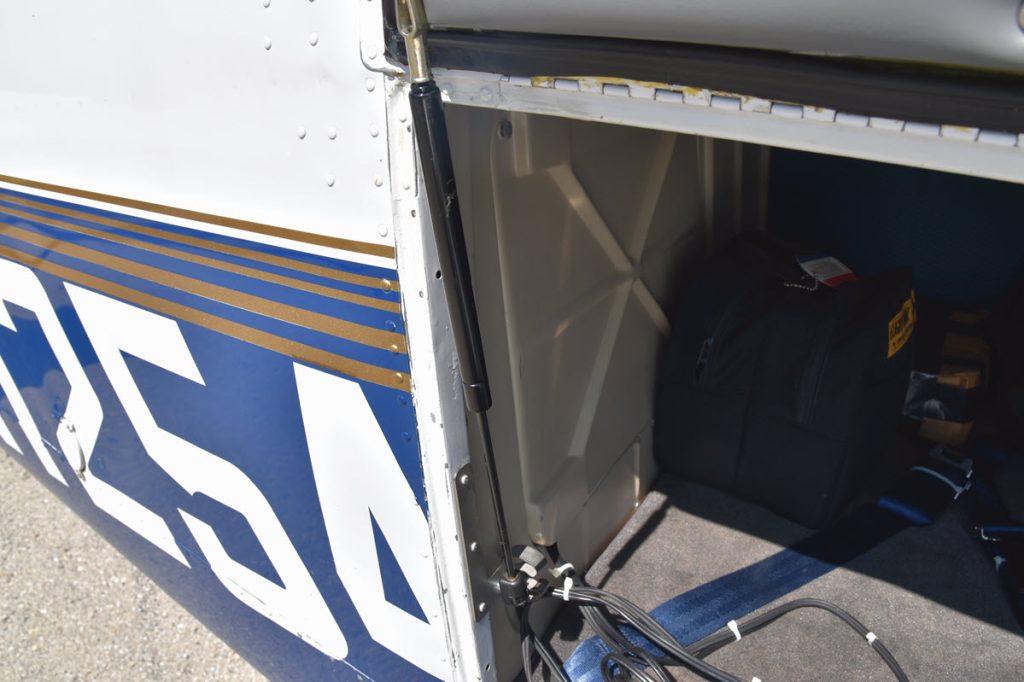
IMPROVEMENTS AND MODIFICATIONS
Here’s a complete list of the modifications and improvements to the Arrow:
- Avidyne 540 MFD
- Avidyne 340 Intercom
- EI SC-5 Super Clock
- Precision Instrument vertical card compass
- Guardian panel mount CO alarm and pulse oximeter
- Sirius/XM receiver for entertainment
- New headliner with new 1/4-inch rubber ceiling insulation
- LP Aero 1/4-inch side windows
- LP Aero 1/4-inch one-piece windshield and STC
- New glare shield
- Electroair single electronic ignition system
- Wolf air/oil separator on engine
- Merlyn Black Magic upper deck controller (automatic wastegate) on turbocharger
- Battery Minder battery charger
- Aspen PFD
- One pressurized magneto
- S-TEC 55x autopilot
- Wheel covers from Aircraft Spruce
- New window molding from Knots2U
- Obvious Innovations replacement air vents
- New carpeting, wall panels, and seat covers from Airtex Interiors
- New YokeUp Interiors leather yoke covers.
- New Whelen LED beacon
- New LED position lights and landing gear lights
- New baggage door seal
- Front door steward
- Baggage door steward
- Medeco replacement door locks
- New ABI seat belts and placards
- New exterior Piper placard from Aircraft Spruce
- All Knots2U speed mods
- Replaced walkway
- LED landing lights
- Knots2U pulsing wingtips
- New cowl chafe
- New alternator
- Rosen Visor sun visors
- McCauley three-blade scimitar prop
The Airframe and Upgrades
With only 3,800 hours on the Arrow’s airframe since 1977, it was almost new. The paint was excellent and there was no corrosion. During the pre-purchase inspection, I did notice that the wing walk was spongy when I walked on it. The previous owner paid about $8,000 to have the wing walk replaced with a new one as part of the pre-purchase inspection. If the wing walk on your Piper is spongy; that is, if it sinks a little when you walk on it, rest assured that this isn’t an airworthiness issue. However, it’s only going to get worse.
The repair technique is simple but high in labor hours and requires two mechanics. The rivets must be drilled out and two new skins installed. The top skin is what you walk on. The skin underneath is the corrugated aluminum piece that becomes worn out from fatigue. Riveting these new pieces in place requires two mechanics, as one needs to rivet, while the other holds a bucking bar on the other side, so the rivet head can be secured.
In my case, with the wing walk removed, I could peek inside the wings from above and see that there was no corrosion. In fact, it was shiny and new just like it came out of the factory. Wasn’t I lucky!
During the COVID winters of 2020 and 2021, I locked myself in my hangar and removed the interior of the airplane. That included the headliner, carpet, seats and seat covers, side panels, plastic molding, armrests, rear bulkhead, windows, window molding and, finally, all the insulation. Again, I checked for anything worn or corroded that needed attention. Fortunately, there was no corrosion and nothing needed repair.
I purchased new 1/4-inch side windows and one-piece windshield and STC from LP Aero Plastics, a company with excellent products. Great Lakes Aero Plastics is also a fine company, but I like LP Aero, and I’ve installed their one-piece windshield and 1/4-inch side windows in five of my airplanes over many decades. Note that you need to inspect around the window openings when the windows are out for replacement. When I replaced the windshield in my last Seneca, there was severe corrosion on the lower part of the window frame that needed expensive attention. In my Arrow, again, no corrosion.
While the windows were out, I used strong chemicals to remove the old adhesive from the floor and ceiling so a new headliner and carpeting could be glued in. Having the windows out while I did that with fans blowing helped keep the fumes down. I’ve written some detailed articles about these restorations and upgrades, which have been posted on our Piper Owners website if you want to mirror some of my projects.
Finally, I installed 1/4-inch rubber sheeting from Airtex on the ceiling and wall panels. These give tremendous noise attenuation in addition to keeping the plane cool in summer and warm in winter. I also installed a complete, custom Airtex interior kit with headliner, carpeting, wall panels, and seat covers. While I had the rear bulkhead out, I did fiberglass repair on it and painted it. I acquired new window and ceiling molding from Knots2U for a fresh look. I also installed Rosen visors, a new glare shield, ABI seatbelts (another great company), YokeUp Interiors custom leather yoke covers (an A+ product!), door stewards on the door and baggage compartment, Medeco door locks, and Obvious Innovations air vents.
The complete, totally new blue and gray interior matches the gray panel perfectly. People ask me all the time if my Arrow is a new airplane!
The Avionics and Upgrades
My new panel with Garmin 345 transponder, Aspen PFD, Sandia Labs backup attitude indicator, S-TEC 55x autopilot, and Garmin 650 looked and functioned well, but I needed to make a few “improvements.” Maybe they weren’t improvements as much as adjustments to make the panel more to my liking.
My Seneca originally had a Garmin 530W. I liked the big screen and WAAS. At the end of its life when it was time for a replacement, the new Garmin 650 was too small and the 750 was too big. So I got an Avidyne 540 GPS for the Seneca, which was just right. I grew to love the 540. It was the right size and low cost, with hardly any installation cost, and it was easy to learn.
In my Arrow, I again found that the 650 was too small and the 750 too big. So again, I used the Avidyne 540. The 540 is amazing, easy to use, and well supported by Avidyne. Best of all, it’s compatible with everything. It gets ADS-B In TIS-B and FIS-B info from the Garmin 345 transponder. It uses Wi-Fi to send GPS, traffic, and weather to my ForeFlight iPad, and it connects perfectly to my Aspen PFD and S-TEC 55x autopilot. Avidyne did an amazing job on this unit.
Next, as I mentioned earlier, I pulled out the KX-170 and installed a TKM MX-170. It’s a slide-in replacement, so no installation cost. I also removed the old mechanical clock and installed my favorite clock, the Electronics International Super Clock. I’ve had these in my last five planes and it’s awesome. I also removed my old “whiskey” compass and put in a vertical card compass from Precision Instrument, a fine company with a great product. Rounding out the panel is a Guardian panel-mount pulse oximeter and carbon monoxide detector. I have a temporary mount for my Sirius-XM music receiver.
USEFUL LOAD, WEIGHT & BALANCE, AND OTHER NUMBERS
| Gross Weight in pounds | 2,900 |
| Actual Empty Weight on April 6, 2023, in pounds | 1,829.81 |
| Center of Gravity (CG) in inches | 82.94 |
| Moment | 151,761.72 |
| Useful Load in pounds | 1,070.19 |
| Full fuel 72 gallons 100LL at 6 pounds/gal | 432 |
| Passenger and baggage useful load with full fuel | 638.19 |
| Max Range at best altitude | |
| 5 hours fuel x 14 gph = max gallons usable | 70 |
| 5 hours x 165 kts = range in nm | 825 |
Performance
Opinions about performance are interesting, as I read incomplete information quite frequently on our forums about turbocharged airplanes. Here’s a typical statement by a member: “My mechanic says I shouldn’t get a turbocharged airplane because maintenance is expensive.” But here’s the truth: I have owned nine Continental TSIO-360s in 35 years. Most have been on Senecas, eight to be exact. I had two TSIO-360-Es that had a 1,400-hour TBO. When I bought the plane, the engines had 2,400 hours SMOH, but they ran perfectly. I had them overhauled by Airmark Overhaul in Florida in 2004. They’re still operating almost 20 years later. When I bought my Turbo Arrow III in 2018, the engine had around 1,500 hours, and it required one cylinder. That’s the extent of my turbo engine issues over 30 years. No failed turbos, no bad engines, just performance!
I live in Wisconsin, which is about 700 feet MSL. About six months are sunny here and the other six months can have clouds and precipitation. Thankfully, we don’t get hurricanes and not a lot of thunderstorms. However, the weather is usually below 10,000 feet, and most of the traffic is much lower or much higher, but almost nothing in the low to mid-teens. We have two Class C airports nearby — Madison and Milwaukee. Flying between 10,000 feet and 16,000 feet almost guarantees me no weather and no traffic. Of course, in a normally aspirated airplane, you might start out at 140 kts on takeoff and climb to 10,000 feet and have 120 kts left in performance. Those engines will get peak performance at around 8,000 feet MSL, give or take. You might see 55% power above 10,000 feet. In my Turbo Arrow with both Electroair electronic ignition and Merlyn upper deck controller, I can maintain 80% to 19,000 feet MSL. I use 33.8 inches of manifold pressure, 2,400 rpm and 13.8 gph from about 2,000 feet to as high as I want. Here’s the good part: my speed at final cruise is 165 kts. And like they say on TV: “Wait, there’s more!”
When I’m down low, I’m cruising around 140 kts, but my maneuvering speed is 119 kts. If it’s summer and it’s warm and bumpy, I have to slow down and lose 20 kts. As you all know, this helps keep the wings attached to the airplane. Remember that maneuvering speed is closely related to IAS. This is what the pilot sees on the airspeed indicator. What the plane “sees” is that depending on altitude and temperature, it’s actually moving faster! This is the airplane’s true airspeed (TAS). The bottom line is that when I’m at higher altitudes cruising at 165 KTAS, my IAS can still be at maneuvering speed! I don’t have to slow down for bumps or even need to be concerned about it.
And there’s still more! I’m getting between 12 and 15 nm/gal of gas and I’m doing 19 statute miles per gallon! The TSIO-360 with Electroair electronic ignition and Merlyn Black Magic upper deck controller make an incredible combination of safety, low cost, and high performance.
HOW MUCH DOES THIS WONDERFUL MACHINE COST?
| Item | Monthly | Annual |
| Hangar-Racine, WI | $236.00 | $2,832.00 |
| Jeppesen Map Subscription | $518.01 | |
| Annual Inspection Cost | $2,618.00 | |
| Fuel 8 hours x 14 gph x $5.09/gal | $570.08 | $6,840.96 |
| Maintenance (Yearly Average) | $5,000.00 | |
| Average Annual Budget | $17,198.97 |
Summary
If you have one or two people who need to fly and one or two more occasionally, this is the least expensive, high-performance, single-engine plane you can get. It accommodates four adults, full fuel, and a little baggage; or two adults with lots of baggage and full fuel; or you can compromise on the fuel as needed. It flies at 165 kts all the way to 19,000 feet MSL.
I’ve seen Arrows on controller.com, ASO.com, and trade-a-plane.com starting at $100,000. That’s certainly expensive but in the same price range as airplanes with much less capability. And it’s “Cherokee-easy” to fly. There’s nothing special, just a constant speed prop and retractable landing gear. The engine is easy to manage once you get used to the throttle being a bit more sensitive than you’re used to on normally aspirated airplanes. It will take about an hour to get used to it.
I give this plane five stars! Maybe you should look at owning one, too.
